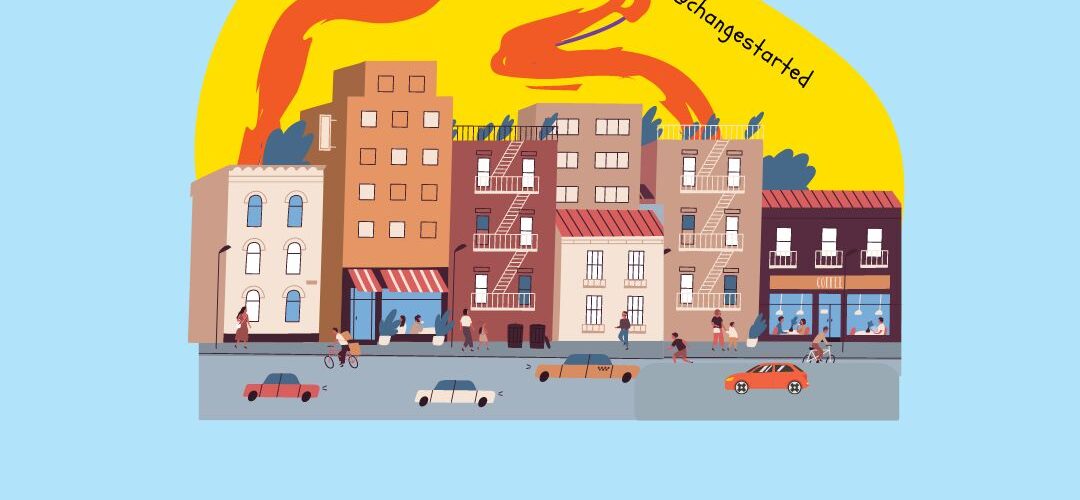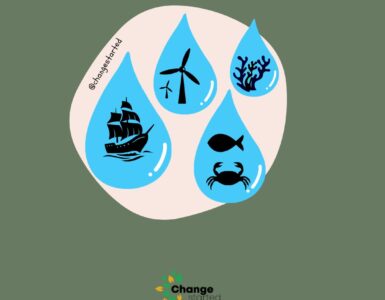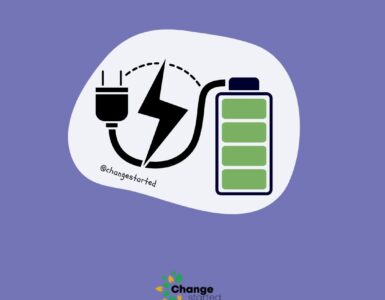Have you ever noticed in the weather reports or personal experiences why it is hotter in cities than in rural areas?
This is due to Urban heat, also known as the urban heat island effect, which is a phenomenon that leads to the higher temperatures experienced in urban areas compared to their rural surroundings.
In 2022, the American space agency NASA observed higher incidences of heat islands in urban parts of Delhi.
The image was acquired by NASA’s Ecosystem Spaceborne Thermal Radiometer Experiment (Ecostress), which revealed a massive red spot over Delhi and smaller red patches around neighboring cities Sonipat, Panipat, Jind, and Bhiwani. The red patches in the data of Ecostress indicated greater temperatures, i.e., incidents of urban heat islands, whereas the rural areas surrounding cities had lower temperatures.
Several factors contribute to the urban heat island effect, some of them include
Impervious Surfaces: Urban areas are densely populated and constructed, meaning many tall buildings and skyscrapers. These buildings are mostly built with impervious surfaces like concrete, which absorb and retain heat, causing temperatures to rise.
Lack of Vegetation: Urbanization often leads to removing trees and green spaces, reducing shade, and evapotranspiration (the process by which plants release water vapor into the atmosphere). As a result, the cooling effect of vegetation is diminished.
Release of Heat: Human activities, such as industrial processes, transportation, and air conditioning, release waste heat, further contributing to the urban heat island effect.
The urban heat island effect can have several negative impacts, including:
- Heat-Related Illnesses: Higher temperatures can lead to heat-related illnesses and exacerbate existing health conditions, particularly for vulnerable populations like the elderly and children.
- Increased Energy Consumption: As urban areas become hotter, there is an increased demand for air conditioning, leading to higher energy consumption and greenhouse gas emissions.
- Air Quality Degradation: Elevated temperatures can worsen air quality, forming smog and other pollutants.
Currently, 50% of the world’s population lives in urban areas, and this is expected to rise to 70% by 2050. By the end of the century, UNEP predicts cities can experience an increase in temperature of up to 4°C if emissions remain high. Steps must be taken to combat the urban heat island effect and create more sustainable and resilient cities:
Solutions to Urban Heat Island Effect
Green Spaces:
Increasing the number of green spaces, parks, and urban forests can help mitigate the urban heat island effect by providing shade and promoting evapotranspiration. Planting trees strategically in urban areas can provide shade, reduce heat absorption, and improve air quality.
Green Roofs and Walls:
Green roofing is the practice of planting vegetation on a roof, just like they are grown in a garden. Installing green roofs and walls on buildings can improve insulation, reduce energy consumption, and create additional green spaces.
Furthermore, air quality is improved as the plants absorb carbon dioxide and produce fresh air.
Urban Planning:
Adopting urban planning strategies that prioritize mixed land use, compact development, and the inclusion of permeable surfaces can help reduce the extent of impervious surfaces.
Light-colored and white Roofs:
Light-colored concrete and white roofs have high reflectivity and low heat absorption and can significantly reduce surface temperatures and indoor cooling needs.
A good example is traditional Greek island architecture, which encouraged people to paint their homes white. Light color would reflect the sun’s rays better and keep the interior cooler.
Heat-Resilient Infrastructure:
Designing buildings and infrastructure with heat-resilient materials can reduce heat absorption and improve thermal comfort. Promoting energy-efficient technologies and practices can minimize waste heat from various sources.
Alternative Transportation:
Encouraging public transportation, walking, and cycling can help reduce vehicle emissions and heat generation from traffic.
Community Engagement:
Involving local communities in urban planning and green initiatives can help create a sense of ownership and foster sustainable behaviors.
Wrapping Up
By adopting these solutions, cities can take significant steps towards mitigating the urban heat island effect, enhancing residents’ quality of life, and promoting environmental sustainability.






Add comment